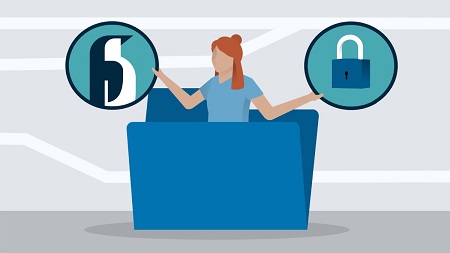
English | MP4 | AVC 1280×720 | AAC 44KHz 2ch | 2h 51m | 331 MB
When it comes to managing Linux servers securely, permissions and access control are crucial. In this course, computer science instructor and Linux enthusiast Grant McWilliams explains how to manage files and directories, create links, and set permissions in Enterprise Linux 8. Grant covers how to maintain access control to files through the standard Linux permission system and access control lists. He also shows how to grant or revoke access to files and directories for users and groups as well as how to set up special bits for privilege escalation, global writable directories, and permission inheritance.
Table of Contents
Introduction
1 Manage files and permissions in Linux
2 What you should know
3 Get help with commands
4 Using the exercise files
Linux Files
5 Matching files with extended globs
6 Advanced extended globs
7 What is a file
8 Getting information about files
9 About extended attributes
10 Getting extended attributes
11 About file globs
12 Using character classes
13 Using globs to match files
14 Matching with brace expansion
15 The Magic of extended globs
Manage Linux Files
16 Understanding filesystem paths
17 Creating files and dirs
18 Copying files and dirs
19 Moving and renaming files and dirs
20 Deleting files and dirs
21 Creating links to files and dirs
22 Making file manipulation safe
23 Challenge Linux files
24 Solution Linux files
Linux Permissions
25 Solution Permissions
26 Standard Linux permissions overview
27 File and directory modes
28 File ownership
29 Permissions using numeric notation
30 Permissions using symbolic notation
31 Initial permissions using umask
32 Special file bits SUID and SGID
33 Special directory bits SGID and Sticky
34 Challenge Permissions
Access Control Lists
35 ACL overview
36 Read ACLs
37 Setting ACLs
38 Manage Default ACLs
39 Delete ACLs
40 ACL tricks
41 Challenge ACLs
42 Solution ACLs
Conclusion
43 Next steps
Resolve the captcha to access the links!